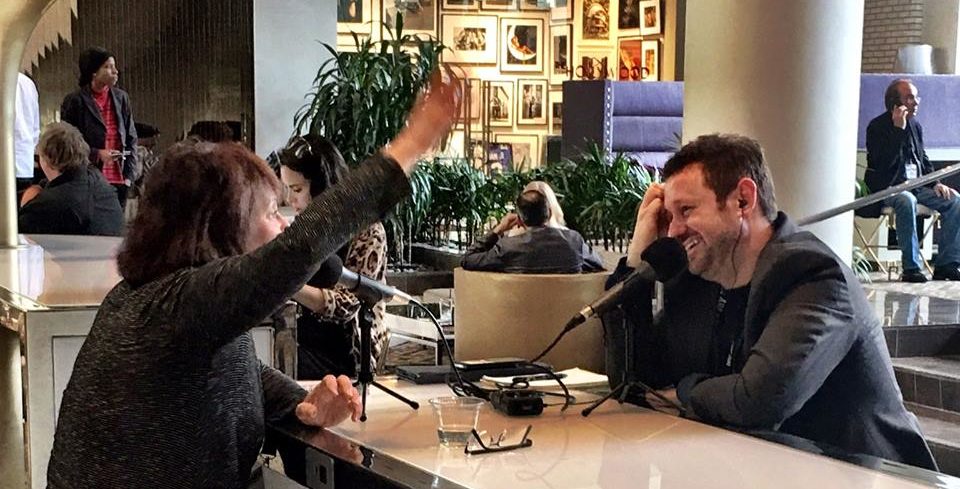
From time to time, people will ask what kind of hardware I use when I head out to events to record podcast interviews. The same kit would work for broadcasters headed backstage to a festival concert or a morning show producer looking to record in the concert parking lot so long as they are not looking to broadcast it live. With that it mind, here’s the setup that I use when I record interviews for the Worldwide Radio Summit: Backstage Interviews podcast:
- The Digital Recorder: I prefer to use a piece of dedicated hardware for recording instead of a computer, tablet, or smartphone. There are simply fewer things that can go wrong. The most important feature to look for in a digital recording device is that it can do multi-track recording. In other words, each microphone is recorded to a separate track that can be edited independently, instead of combining the audio into a single stereo track. This way, if you are louder than your guest, or the two of you talk over each other, you can fix it in post-production. Typically, I use a Zoom H5 digital recorder, which comes with two inputs by default, but can accommodate up to four mic inputs with the addition EXH-6 input capsule. Or you can upgrade to the Zoom H6 which comes with four inputs by default and can be expanded to six. On the other hand, if you will never need more than two, the Tascam DR-40 is a good option.
- ATR-2100 or ATR-2005 Microphones: These are the go-to microphones in the podcasting community. They’re around $75 apiece and will deliver decent sound for people who aren’t looking to spend an NPR-sized budget on a shotgun mic. The key with these is to have the guests get as close to the mic as possible to minimize ambient noise. You’ll want to get inexpensive foam windscreens to cover them.
- Shure A26 X 3″ Extension Tubes: While the ATR mics come with a desk stand, it’s too short for a comfortable tabletop conversation, so I use these extension tubs to make it more pleasant for me and my guests.
- Sony MDR-7506 Headphones: Old habits die hard. I’m a radio guy, and these have been the industry standard headphones since I started back in college. To this day, I refuse to use anything else.
- SD Cards: Read the manual for your digital recorder. I tried using a 128GB card once without realizing that the Zoom doesn’t work with them, and I lost an entire day’s worth of interviews.
- Eneloop Rechargeable Batteries: Always always always bring backup batteries with you. More than once, I’ve had a recorder die on me in the middle of an interview. You can minimize the embarrassment by quickly pulling out a fresh set of batteries. Eneloop makes top of the line rechargeable batteries and I always carry them and a wall outlet-powered charger in my backpack.
This entire setup will only cost a few hundred dollars, and I’ve been using it for years to record at the Worldwide Radio Summit, CES, and more with great results. If you’re looking for a relatively inexpensive setup that will produce decent results, this is a good place to start.
More Digital Tips
- Give Away Radio Station Stickers to Capture Listener Contact Info
- Rethinking The Digital Intersection Between Corporate and Station Brands
- Twenty 2018 Digital New Year’s Resolutions for Your Radio Station
- How to Optimize Your Radio Station’s Blogposts for Search Engines
- Your Radio Station’s Homepage Has Too Much Crap On It
- A Simple Digital Treat to Thank Your Radio Listeners This Thanksgiving - November 13, 2023
- Interview Questions When Hiring Your Radio Station’s Next Digital Marketing Manager - November 6, 2023
- A Radio Conversation with ChatGPT: Part 2 – Promotions - October 30, 2023





Seth – This was super helpful!